Orm
Posts: 22154
Joined: 5/3/2008
From: Sweden
Status: offline

|
quote:
ORIGINAL: warspite1
Given the discussion above, please see attached the write up for Graf Spee, which is finished subject to any comment.
[4784 Graf Spee - by Robert Jenkins]
.B Engine(s) output: 54,000 hp
.B Top Speed: 28 knots
.B Main armament: 6 x 11-inch (280mm), 8 x 5.9-inch (150mm) guns
.B Displacement (full load): 16,200 tons
.B Thickest armour: 3-inch (belt)
.P Under the terms of the Treaty of Versailles, the German Navy was allowed
to build warships up to a 10,000 ton displacement and with 11-inch main armament.
These limitations were designed to restrict the type of vessel that the Germans
could realistically build. Nothing more than a coastal defence type unit was
likely to be achieved within these limitations..or so it was thought.
.P However, the German designers came up with a design that met the restrictions
but provided a useful, modern, surface raider. The key principle was that the
ships had to be more powerful than any faster ship and faster than any more
powerful ship, and this was true at the time they were built, with the exception
of the three Royal Navy battlecruisers: Hood, Repulse and Renown.
.P The ships used diesel engines, which were more economical than steam turbines,
something necessary for a surface raider. The use of diesel also meant that the
engines produced less smoke; again a bonus given their planned deployment.
.P To the Germans, these were panzerschiffe or armoured ships. To the British
they became known as pocket-battleships. However, as with all ships, there were
compromises to be made. The class were thinly armoured and had all their main
armament concentrated in just two turrets.
.P Up to eight ships were planned originally, but only three were laid down and
completed before the appearance of the French Dunkerque-class made the Germans
re-think future ships.
.P In 1940 they were re-classified as heavy cruisers.
.P Graf Spee was completed in January 1936. She set out for her first deployment
on the 21st August 1939, eleven days before the outbreak of the Second World War.
Her task was to get herself in position in the South Atlantic to await the order
to begin attacking Allied merchant shipping. To assist her operation, the supply
ship Altmark had sailed at the beginning of August for the USA where she loaded
up with fuel and other stores for the Graf Spee`s future use (see Transport
Counter 4822).
.P It was only on the 26th September that Graf Spee was given the opportunity to
attack but Captain Langsdorff, in command of the Graf Spee, was also given orders
not to attack enemy naval vessels, even if more lightly armed than his own.
Furthermore, his ability to attack merchant shipping was restricted because of
the Prize Regulations. After the propaganda disaster that was the U-30`s attack
on the liner Athenia, no attacks on passenger vessels were allowed either.
.P The British and French formed eight hunting groups to try and track down the
surface raiders. These hunting groups initially consisted of four aircraft
carriers, three battlecruisers and thirteen cruisers that were spreadout to cover
the vast expanses of the North, South and Indian Oceans. It was like looking for
needle in a haystack.
.P In the period September to December 1939, the Graf Spee sank nine merchant
ships totalling just over 50,000 GRT in the South Atlantic and the Indian Oceans.
During these nine sinkings, no Allied sailors were killed, as Langsdorff followed
the Prize Regulations. The merchant sailors captured were then transferred to the
Altmark as and when Graf Spee rendezvoused with her supply ship.
.P In early December, Langsdorff decided it was time to head back to Germany.
Graf Spee was starting to feel the effects of almost four months at sea and her
engines needed maintenance. Langsdorff decided to sail for the rich pickings to
be found off the River Plate estuary on the South American trade route, before
beginning the voyage back to Germany.
.P This was where the Royal Navy`s Commodore Henry Harwood, had guessed that Graf
Spee would go next. Harwood was in command of Force G that consisted of the heavy
cruiser Exeter and the light cruisers Achillies and Ajax. Harwood had devised a
plan of attack to beat the pocket-battleships using a cruiser force before the
war; this plan was about to be put into effect.
.P Langsdorff had grown increasingly frustrated by his orders which were clear;
he could not engage with enemy naval forces. Contrary to popular belief, it was
not Harwood that spotted and then attacked Graf Spee; rather it was Langsdorff
that spotted the Royal Navy cruisers and chose to do battle. His decision to
engage on the morning of the 13th December was a risky one as he needed to sink
or sufficiently cripple his opponents. If he did not, Graf Spee would not have
the speed to shake off a subsequent shadowing by the cruisers who would bring
every available ship down on the panzerschiffe.
.P The battle started at 0617hrs when Graf Spee opened up her 11-inch guns at
just over 21,500 yards. She headed at top speed toward the cruisers in order
to close the range. Exeter took the brunt of Graf Spee`s initial salvos which
were deadly accurate, but three minutes later, Exeter was able to return fire
and scored a hit on one of the German 4.1-inch anti-aircraft guns and her fresh
water plant. Graf Spee then scored a direct hit on Exeter`s B turret and
splinters from this shell smashed into her bridge killing almost everyone there.
Exeter`s Captain Bell was wounded, but was able to continue giving orders from
the secondary control position.
.P Meanwhile, the light cruisers had begun opening fire at 0622hrs and at about
0630hrs, with Exeter having taken severe punishment, Langsdorff turned his
attention to Ajax and Achilles. While the three ships fired at each other, Exeter
used the respite to launch an unsuccessful torpedo strike. Graf Spee then turned
her attention back to the heavy cruiser once more and for about ten minutes the
two ships, Exeter with just four guns left, duelled. The Graf Spee was hit twice
more but by now Exeter had just one turret operational. Graf Spee switched target
once more and Achilles was badly damaged by an 11-inch shell near missing her.
Her director control tower became a bloody mass of bodies. This damage affected
the firing accuracy of Achilles and both she and Ajax were having problems
hitting their target. After this, Graf Spee switched back one final time to
Exeter, resulting in the heavy cruiser breaking off the engagement at 0729hrs
when her third and final turret went out of action.
.P However, Graf Spee had not got away unscathed and her forward turret had given
her problems intermittently during the battle. The two remaining cruisers started
to hit the German ship more frequently, although many of the British shells were
simply bouncing off the German ship`s armour belt. Graf Spee responded with a
shell that took out both X and Y turret on Ajax. It was now 0730hrs and the range
was 11,000 yards. Ajax launched a torpedo strike, as did Graf Spee but neither
were successful. The fighting continued until 0740hrs, when Harwood decided to
withdraw in order to attack at night; but Graf Spee did not follow. Instead
Langsdorff headed west towards the River Plate, shadowed by the two bruised and
bloodied light cruisers. From time to time the pursuers strayed into range of the
enemy guns and had to withdraw under smokescreen, but they ensured that they
remained sufficiently close to Graf Spee so as not to lose her. Surprisingly,
Langsdorff made for the neutral country of Uruguay and Montevideo harbour rather
than the more friendly Argentina.
.P Once there, he asked the Uruguayans for time to effect repairs to his ship.
However, under international law Graf Spee could only remain in the neutral port
for 24 hours. In addition, she could not leave port less than 24 hours after a
merchant ship belonging to a country she was at war with had left port. The
British, acutely aware that there were no capital ships close to Uruguay at that
time told the captains of British and French merchant vessels in Montevideo to
leave at 24 hour intervals in order to keep Graf Spee holed up. However,
Langsdorff was in no hurry to go anywhere. He could not know there were no other
warships anywhere close to Montevideo other than the two light cruisers that Graf
Spee had just evaded, but he seemed to convince himself there were. No doubt
false intelligence fed to the Germans that this was the case did nothing to
dispel such thoughts, and it was rumoured that a large force of capital ships,
including an aircraft carrier, were anchored off the River Plate. In the end,
Langsdorff decided to scuttle his ship rather then have her interned in Uruguay
or have her fight a hopeless battle against what he thought were superior forces.
Langsdorff killed himself shortly after the scuttling.
Superb, 
as always.
Thanks to, as always, well informed forum members I learned that Graf Spee was one of few ships that had radar at the outbreak of the war. Maybe that Graf Spee had radar is worth mentioning?
_____________________________
Have a bit more patience with newbies. Of course some of them act dumb -- they're often students, for heaven's sake. - Terry Pratchett
|
 Printable Version
Printable Version
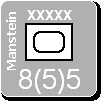








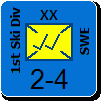
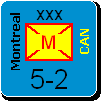
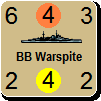






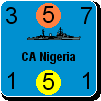





 I should have looked up your name - I would have recognized 'Joel'. Did you change your avatar recently? [Says he, striving to find some dignity, while risking losing more.]
I should have looked up your name - I would have recognized 'Joel'. Did you change your avatar recently? [Says he, striving to find some dignity, while risking losing more.]
 New Messages
New Messages No New Messages
No New Messages Hot Topic w/ New Messages
Hot Topic w/ New Messages Hot Topic w/o New Messages
Hot Topic w/o New Messages Locked w/ New Messages
Locked w/ New Messages Locked w/o New Messages
Locked w/o New Messages Post New Thread
Post New Thread